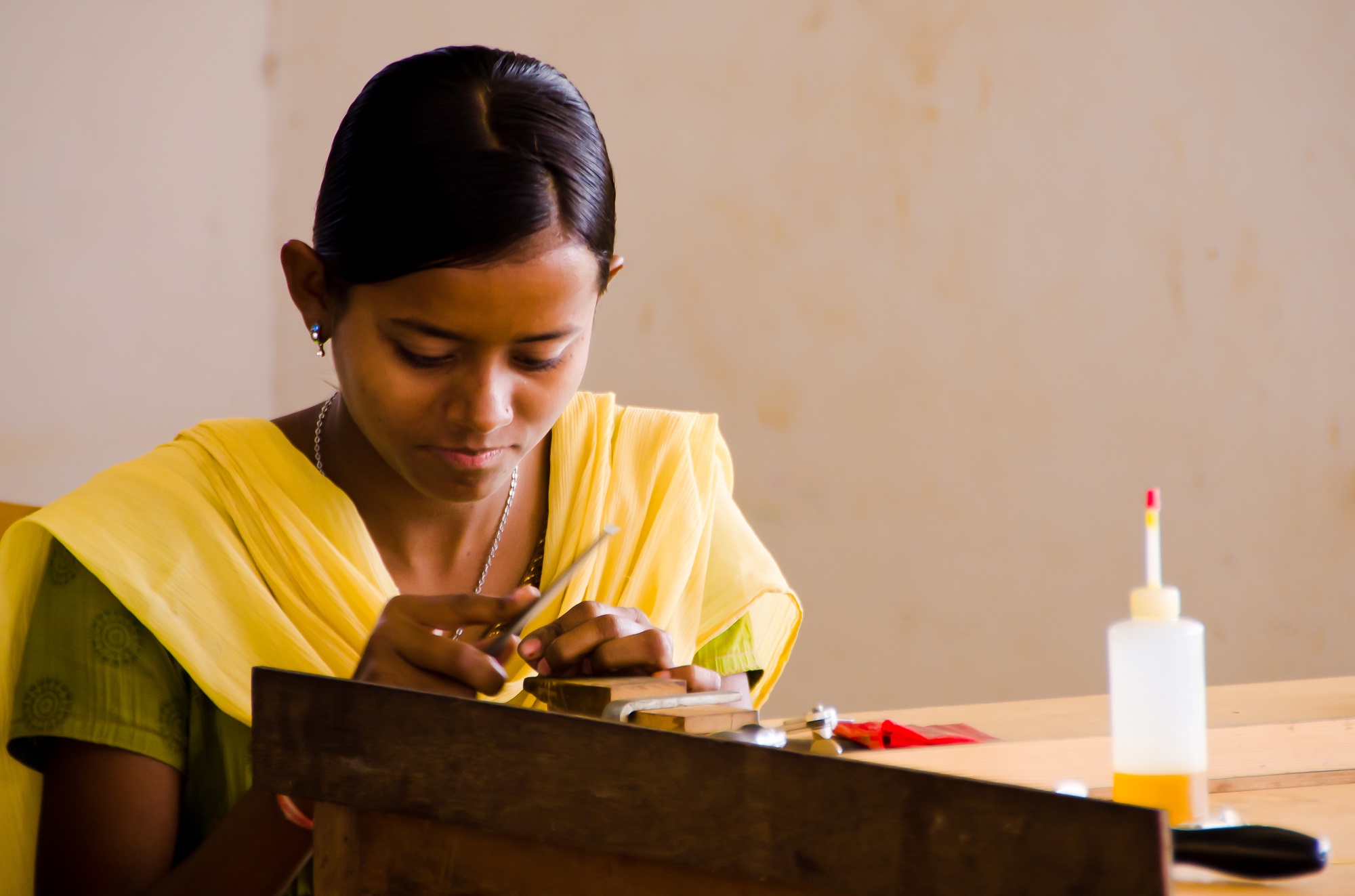
Mission
The mission of Her Future Coalition is to help survivors of gender violence – and girls at the highest risk – find and realize their individual goals and dreams, and to provide them the tools they need to remain free forever.
Life Challenges of the Women Served
Forty-five million people in the world are living in slavery, and 71 percent of those trafficked are women and girls. Trafficking of women for sexual exploitation is an international human rights crisis and India is an epicenter of the problem with an estimated 18 million of the world’s enslaved population. There are five red light areas in Kolkata (Calcutta) alone, with a captive population of at least 100,000 women and children.
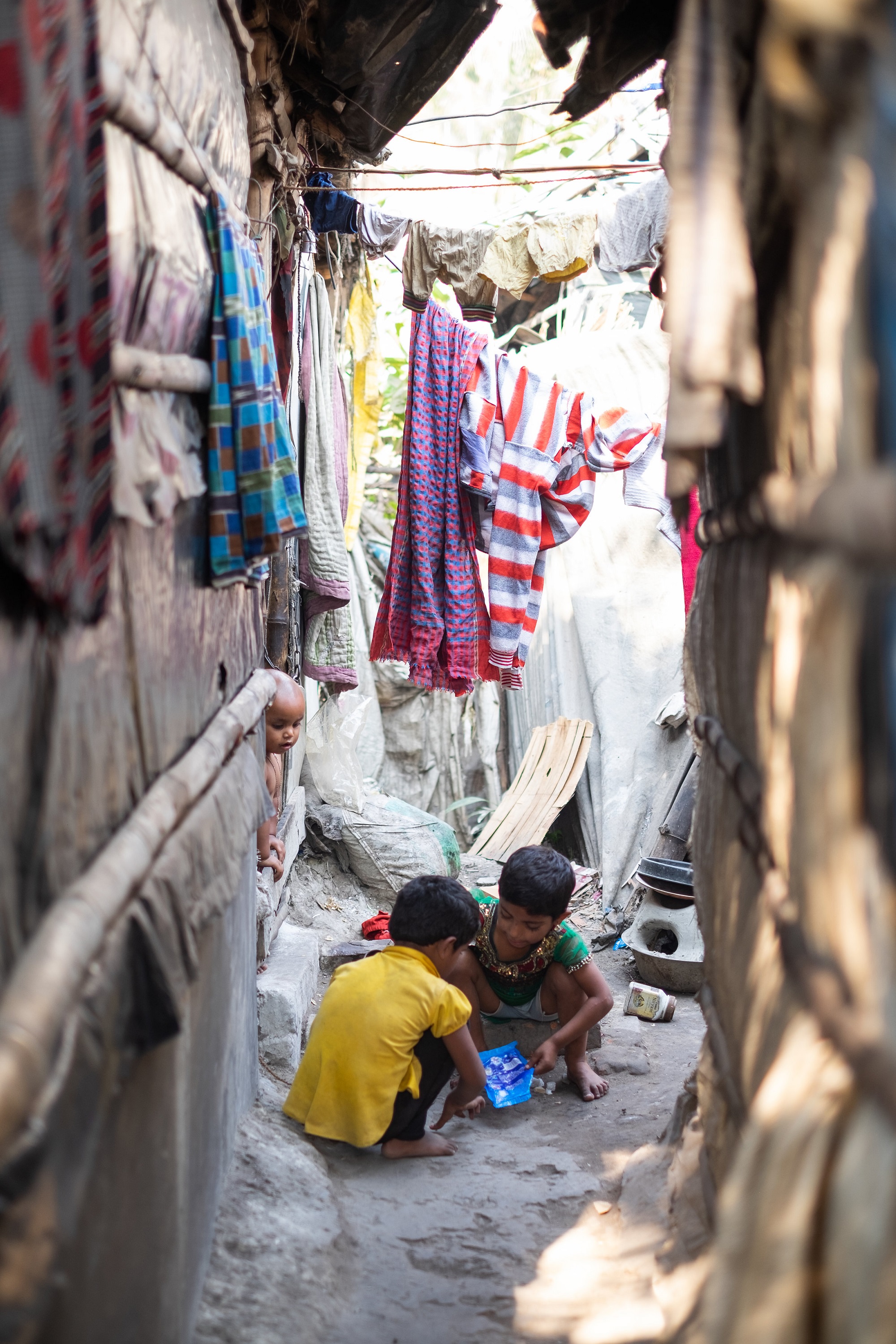 One out of three girls in India is married before the age of 18. Child marriage interrupts schooling and limits a girl’s opportunities throughout her life. More than 7,200 children report rapes in India each year. Among these, victims who do report the assaults often suffer mistreatment and humiliation from the police. Not surprisingly, children in the red light area are particularly vulnerable to sexual assault. Ninety percent of girls and 75 percent of boys growing up in the red light area have been sexually abused by the age of eight. These areas are also hot spots for many gender violence issues, such as forced child marriage, repeated rape, and severe domestic violence.
One out of three girls in India is married before the age of 18. Child marriage interrupts schooling and limits a girl’s opportunities throughout her life. More than 7,200 children report rapes in India each year. Among these, victims who do report the assaults often suffer mistreatment and humiliation from the police. Not surprisingly, children in the red light area are particularly vulnerable to sexual assault. Ninety percent of girls and 75 percent of boys growing up in the red light area have been sexually abused by the age of eight. These areas are also hot spots for many gender violence issues, such as forced child marriage, repeated rape, and severe domestic violence.
Women and children in the red light districts of Kolkata are subject to inhumane conditions, violence, and oppression. Without intervention, they have almost no hope of getting out of the cycle of violence and marginalization. Women who are victims of human trafficking and repeated rape experience severe trauma and health issues including TB, STDs, HIV/AIDS, and pelvic inflammatory disease. The damage to their mental health and self-esteem is extreme. Many victims experience complete disassociation from their bodies. Ninety-eight percent of brothel-based sex workers are illiterate, which is unsurprising given the reality that 49 percent are trafficked before age 16 and come from marginalized communities with little access to quality formal schooling.
Women who spend decades being exploited in red light areas face an even harsher fate as they age. When they are no longer young and healthy enough to attract even the lowest-paying clients (or those demanding particularly violent or degrading sexual services), they are literally cast out on the streets, where many live on scraps of cardboard begging for food. A more undignified end to a life is hard to imagine.
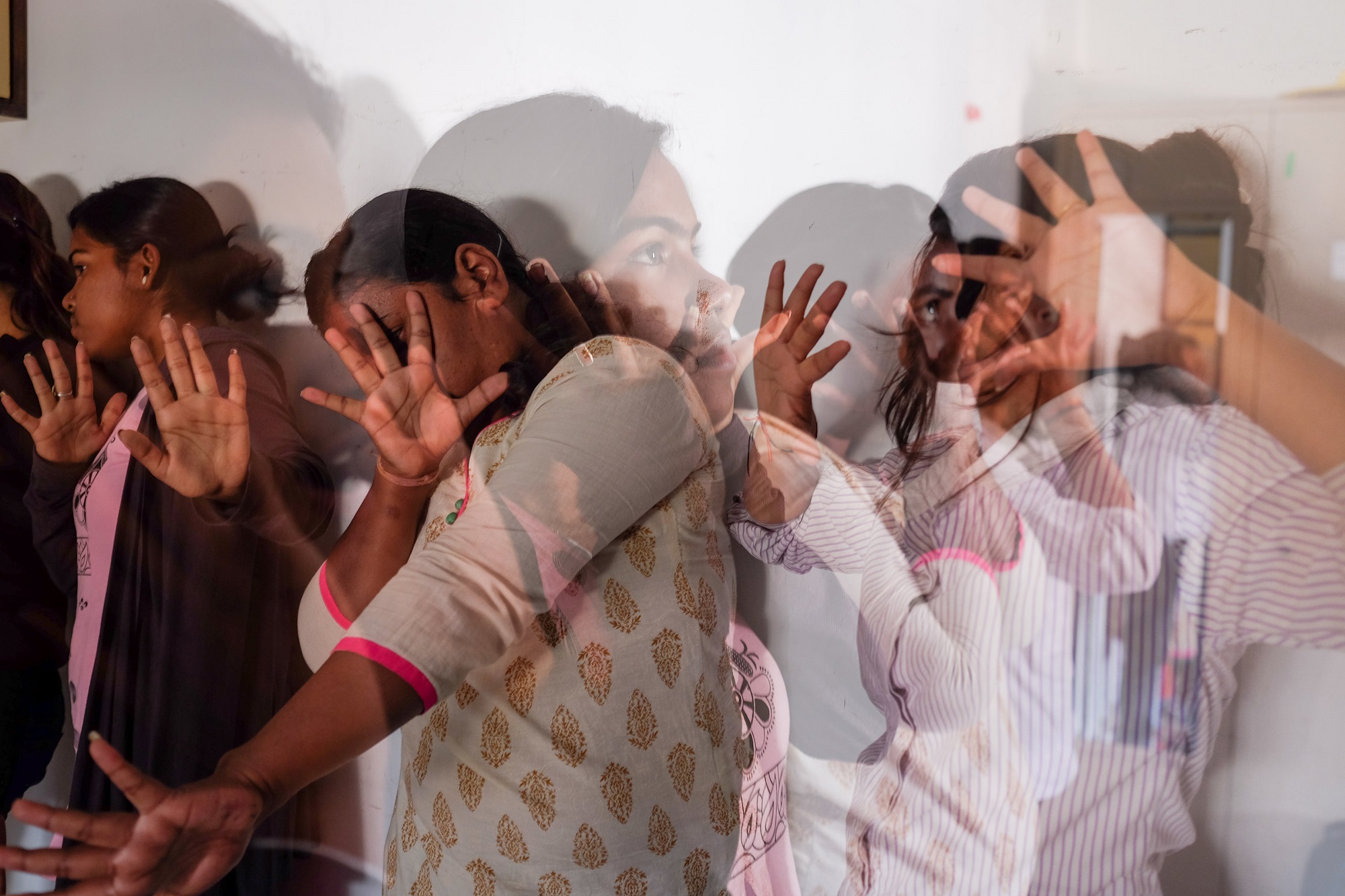 The root causes of trafficking are poverty and the low status of women. In the poorest parts of South Asia, girls have low status in the family and the community. Sadly, female value is so low that female infanticide is a significant problem. In Nepal, where many girls in India’s red light areas come from, a married woman is traditionally expected to wash her husband’s feet each night, then dip a hand in the dirty water and put some into her mouth to symbolize her deference and low status. This is merely one illustration of the culturally accepted view of women in areas with high incidence of gender violence.
The root causes of trafficking are poverty and the low status of women. In the poorest parts of South Asia, girls have low status in the family and the community. Sadly, female value is so low that female infanticide is a significant problem. In Nepal, where many girls in India’s red light areas come from, a married woman is traditionally expected to wash her husband’s feet each night, then dip a hand in the dirty water and put some into her mouth to symbolize her deference and low status. This is merely one illustration of the culturally accepted view of women in areas with high incidence of gender violence.
Girls in from poor families in South Asia are overlooked when it comes to formal schooling. If resources within a family are limited, only the boys are sent to school. Girls who grow up in cultures where they are expected to obey their parents and others in authority are poorly equipped to fight their enslavement and successfully escape their enslavers.
The Project
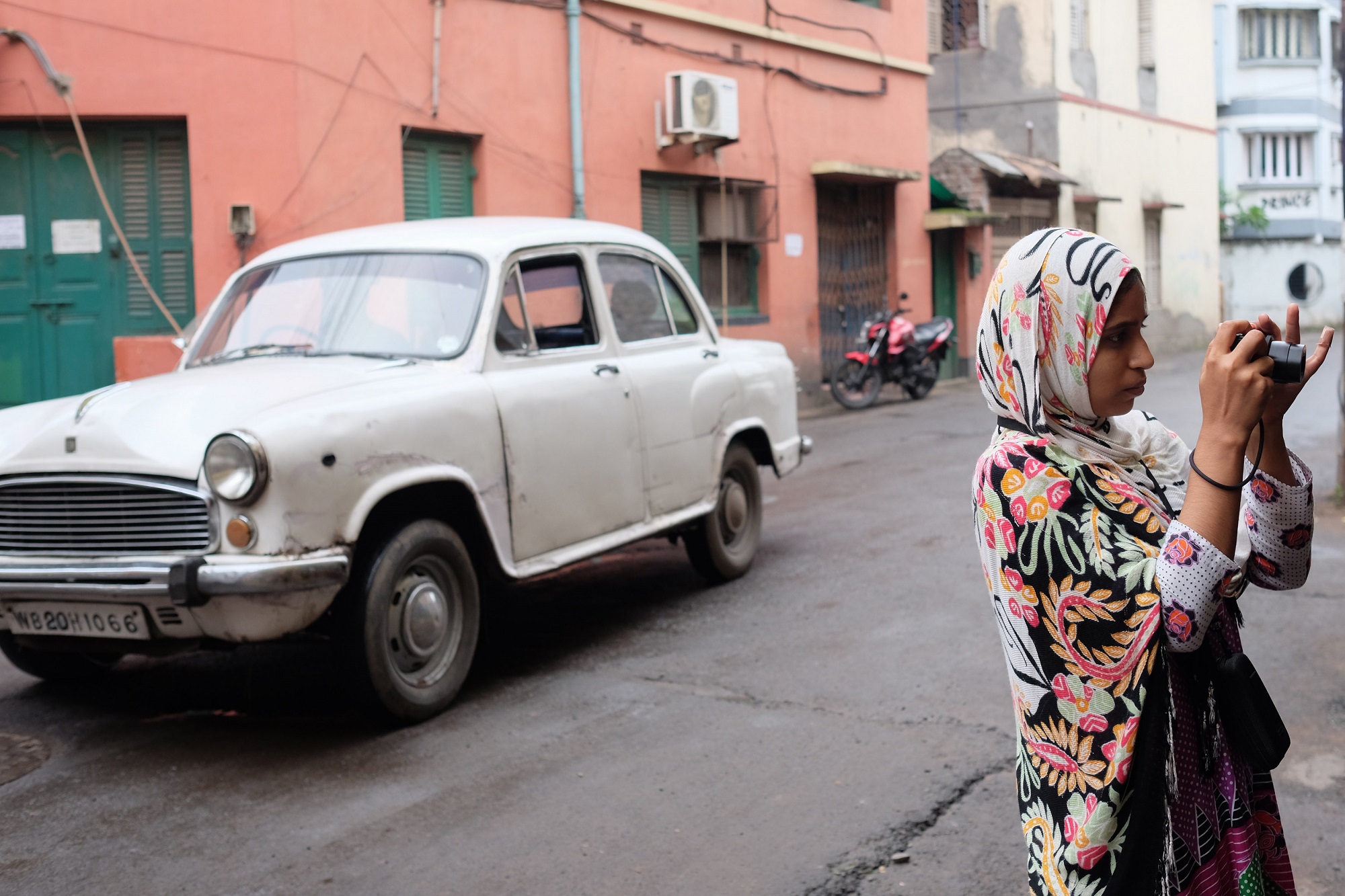 The purpose of this project is to support and expand HFC’s Red Light Area Resource Centers, where women gain access to job training, employment, counseling, and informal education, and children receive education, counseling, safe spaces, and training in therapeutic arts. These expanded Resource Centers will serve 250+ women and children in two Kolkata red light areas, Sonagachi (Kolkata’s largest red light area) and Bowbazar. With this grant, HFC will provide safe space and education to 150 children, mental health counseling to 100 women and children, plus new and paid vocational training programs to 30 women. All told, the expectation is that this grant will directly benefit 195 women and girls, and indirectly benefit 1,000.
The purpose of this project is to support and expand HFC’s Red Light Area Resource Centers, where women gain access to job training, employment, counseling, and informal education, and children receive education, counseling, safe spaces, and training in therapeutic arts. These expanded Resource Centers will serve 250+ women and children in two Kolkata red light areas, Sonagachi (Kolkata’s largest red light area) and Bowbazar. With this grant, HFC will provide safe space and education to 150 children, mental health counseling to 100 women and children, plus new and paid vocational training programs to 30 women. All told, the expectation is that this grant will directly benefit 195 women and girls, and indirectly benefit 1,000.
Activities at HFC’s Resource Centers are already well-known, with waiting lists for some programs. The key components to the program DFW is supporting are:
- Safe spaces for children: The Resource Centers offer a safe place for children to study, play, or simply find shelter while their mothers are seeing clients. The Centers are open to any and all women and children in the communities. These spaces make it possible for children to stay in school and make it far less likely they’ll be abused. Participants learn their human and legal rights. Girls are encouraged (and given the resources) to pursue their individual goals and dreams, including careers traditionally done only by men. Red light families share one room in a brothel, so it’s dangerous for children to remain at home while their mothers are seeing clients. Many children have been abused because a
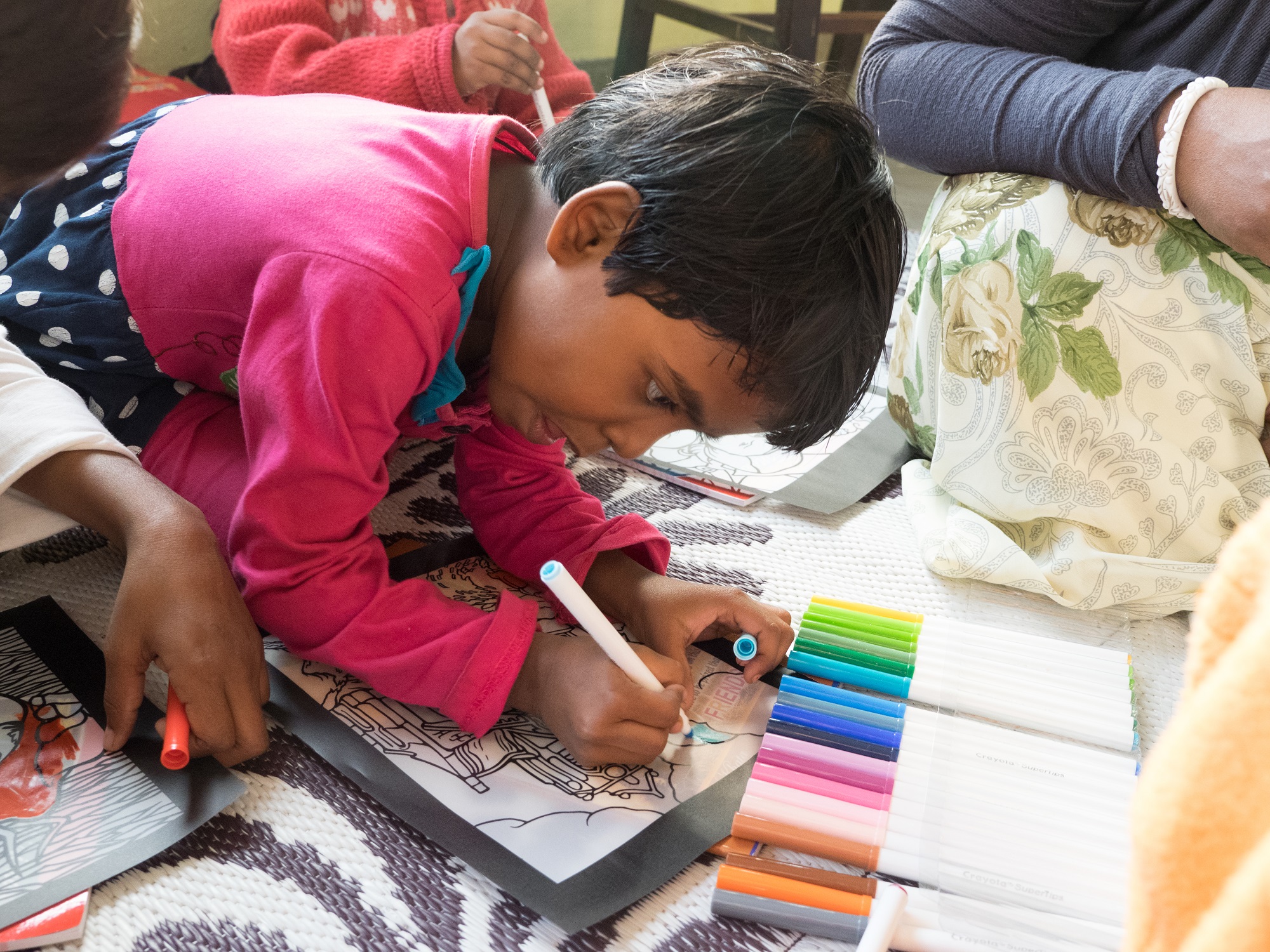 client tired of the mother and simply reached for her young child instead. The streets in the red light area are also not safe for children, because from late afternoon into the night hours, they are teeming with raucous, drunken men seeking sexual services. The Resource Centers will be open from 8 a.m. – midnight and staffed by women from the community as well as professional social workers and teachers. While there, children will be fed healthy meals and receive tutoring, training, and counseling. With DFW’s grant, HFC will recruit and hire additional staff for the Resource Centers and for expanding hours of operation.
client tired of the mother and simply reached for her young child instead. The streets in the red light area are also not safe for children, because from late afternoon into the night hours, they are teeming with raucous, drunken men seeking sexual services. The Resource Centers will be open from 8 a.m. – midnight and staffed by women from the community as well as professional social workers and teachers. While there, children will be fed healthy meals and receive tutoring, training, and counseling. With DFW’s grant, HFC will recruit and hire additional staff for the Resource Centers and for expanding hours of operation. - Job training and employment for mothers: Through this grant, HFC will offer job training and dignified employment to women in one of three vocational tracks: cooking/catering, jewelry making, and computers/bookkeeping. Participants choose the training that best meets their needs and interests, and gain the skills, confidence, and economic advantage to overcome extreme poverty and social stigma and support their children. Women’s lives will be transformed because they will acquire the ability to earn a livelihood outside of prostitution. The women will spend four to six hours per day, five days per week, in training (six months for catering, a year or longer for jewelry and computers). This grant allows HFC to hire the trainers and purchase the necessary tools and equipment. HFC will also help the women who complete the training open bank accounts and start small businesses or find outside employment. The vocational training programs are designed to evolve into self-sustaining small businesses run by the women The expected revenue from survivor-run businesses is $10,000 per year.
 Mental health counseling for mothers and children: Through counseling, women and children will begin to heal from years (or decades) of trauma, rebuild self-esteem, and envision a different kind of life for themselves and each other. Being trafficked, engaging in violent sexual acts every night, seeing your children exploited: these shatter a woman’s mental health. Children who regularly see their mothers hurt and humiliated, who in many cases are sexually abused themselves, also need intensive counseling to heal. DFW’s grant allows HFC to employ additional therapists to provide group and individual counseling.
Mental health counseling for mothers and children: Through counseling, women and children will begin to heal from years (or decades) of trauma, rebuild self-esteem, and envision a different kind of life for themselves and each other. Being trafficked, engaging in violent sexual acts every night, seeing your children exploited: these shatter a woman’s mental health. Children who regularly see their mothers hurt and humiliated, who in many cases are sexually abused themselves, also need intensive counseling to heal. DFW’s grant allows HFC to employ additional therapists to provide group and individual counseling.- Education sponsorship, tutoring, preschool and remedial education for children: HFC provides education sponsorships, non-formal education (for preschoolers and children in need of remedial education), tutoring, and enrichments to the children of the area. This enables children to successfully stay, return, or start school. DFW’s grant allows HFC to recruit and hire additional teachers and tutors, expand capacity, acquire books and other training materials, and purchase furniture such as small tables and benches. Adding English language training is a significant step toward women and girls being able to leave the red light areas.
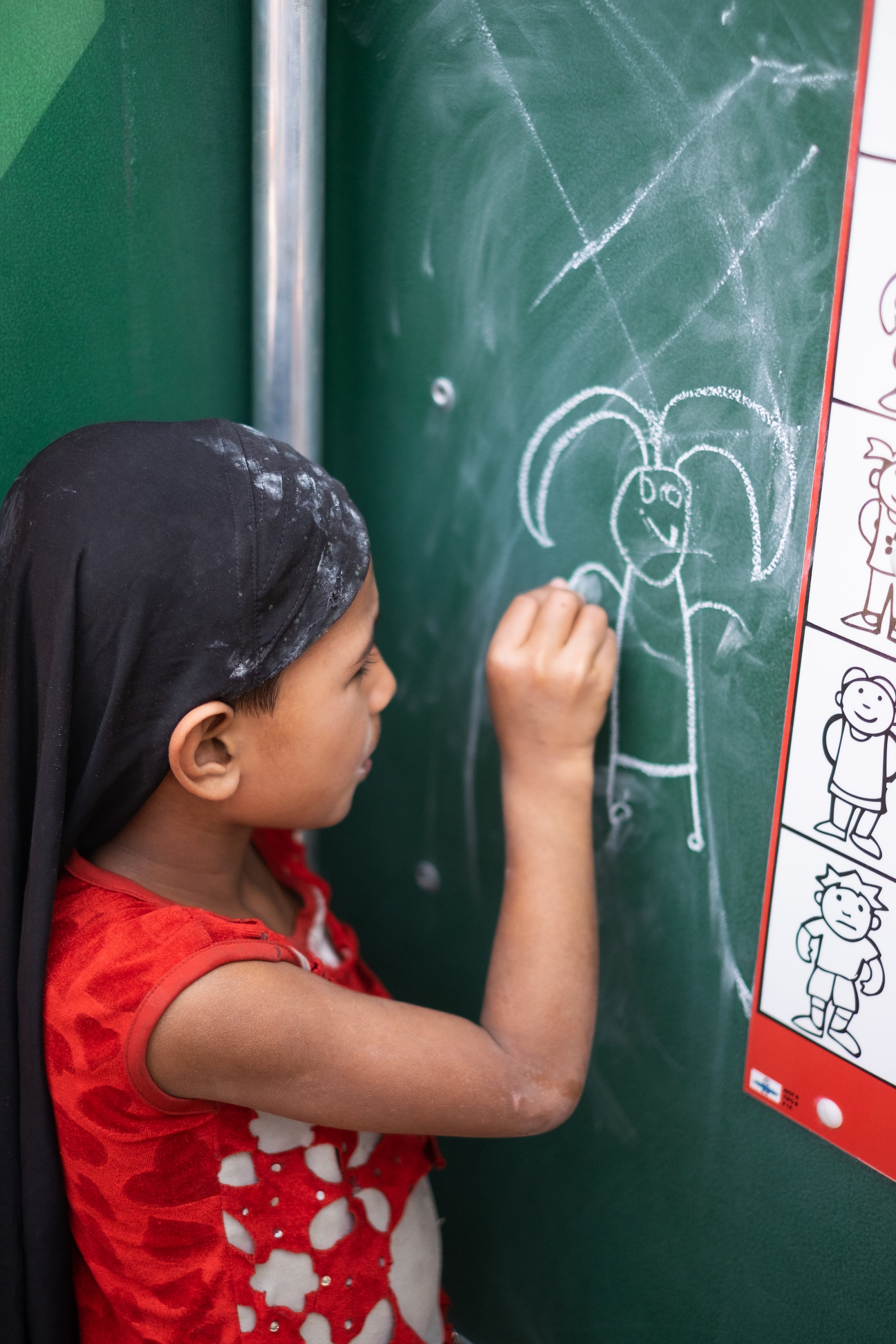 The Red Light Resource Centers are operated in partnership with South Kolkata Hamari Muskan (SKHM), an anti-trafficking organization that has worked in Kolkata’s red light areas since 2009. HFC’s founders knew and worked with the SKHM founders for over a decade in prior capacities. Their partnership has been extremely successful and rewarding, with the design and methods of HFC’s projects strongly influenced by SKHM’s understanding and experience. SKHM had one of the three spaces which currently house the Resource Centers. Together, HFC and SKHM identified and upgraded two additional spaces, including a covered rooftop, as space is difficult to find in the red light area. HFC pays for any necessary upgrades, construction, and rent. SKHM hires and manages much of the program staff. HFC manages the jewelry training, while SKHM manages the catering training. HFC and SKHM intend to co-manage the computer/bookkeeping training. HFC sponsors many SKHM children for school, and HFC’s School Sponsorship Coordinator works with the SKHM staff to oversee children’s education and to offer enrichment activities such as art classes and the library which was recently added. Through the University of Texas, San Antonio, HFC is working together with SKHM on a research project about their work.
The Red Light Resource Centers are operated in partnership with South Kolkata Hamari Muskan (SKHM), an anti-trafficking organization that has worked in Kolkata’s red light areas since 2009. HFC’s founders knew and worked with the SKHM founders for over a decade in prior capacities. Their partnership has been extremely successful and rewarding, with the design and methods of HFC’s projects strongly influenced by SKHM’s understanding and experience. SKHM had one of the three spaces which currently house the Resource Centers. Together, HFC and SKHM identified and upgraded two additional spaces, including a covered rooftop, as space is difficult to find in the red light area. HFC pays for any necessary upgrades, construction, and rent. SKHM hires and manages much of the program staff. HFC manages the jewelry training, while SKHM manages the catering training. HFC and SKHM intend to co-manage the computer/bookkeeping training. HFC sponsors many SKHM children for school, and HFC’s School Sponsorship Coordinator works with the SKHM staff to oversee children’s education and to offer enrichment activities such as art classes and the library which was recently added. Through the University of Texas, San Antonio, HFC is working together with SKHM on a research project about their work.
HFC has developed this model based on 13 years of experience, research, and close collaboration with multiple local partners. They have learned that for women and children facing the most severe forms of gender violence and marginalization, incremental gains and short-term interventions do not work. This population needs a full circle approach that addresses shelter, education, economic empowerment, and physical and mental health. This is the best practice for this type of community and it is the only way to help people in this situation get out the cycle of exploitation and poverty. According to HFC, for this type of local program there is no better source of program design than seeking experienced professionals who have been working in the community, are trusted by the community, and whose philosophy is to “ask – learn – design- execute – ask again – repeat.” HFC seeks to work with peers in the field who are skilled at listening and observing and creating dynamic programs that evolve to meet the needs of their changing communities.
 This program makes a strong statement that the status quo will no longer be silently tolerated and that there is now another option for women and children in the community. Changing a community from within is a long process, but HFC knows from experience that the promise of hope that arises from these Resource Centers is an excellent place to start. For women trapped in oppressive situations, it will shine a light of hope and invite them to explore alternatives to their current circumstances. HFC hopes to continue growing the Centers so that those indirectly impacted this year will have the possibility of direct impact in future years.
This program makes a strong statement that the status quo will no longer be silently tolerated and that there is now another option for women and children in the community. Changing a community from within is a long process, but HFC knows from experience that the promise of hope that arises from these Resource Centers is an excellent place to start. For women trapped in oppressive situations, it will shine a light of hope and invite them to explore alternatives to their current circumstances. HFC hopes to continue growing the Centers so that those indirectly impacted this year will have the possibility of direct impact in future years.
Of the 250 women and children served directly through this grant, 195 will be female. The target population consists of three sub-populations: young children of sex workers, teenage children of sex workers (at especially high risk for being exploited), and adult women who are current or former sex workers. The majority of adult women and around half the children and adolescents are illiterate. They endure poor nutrition, limited options for hygiene or health care, and are dealing with extreme poverty and violence, so they have many health problems, including TB, STDs, digestive issues, and stunted growth.
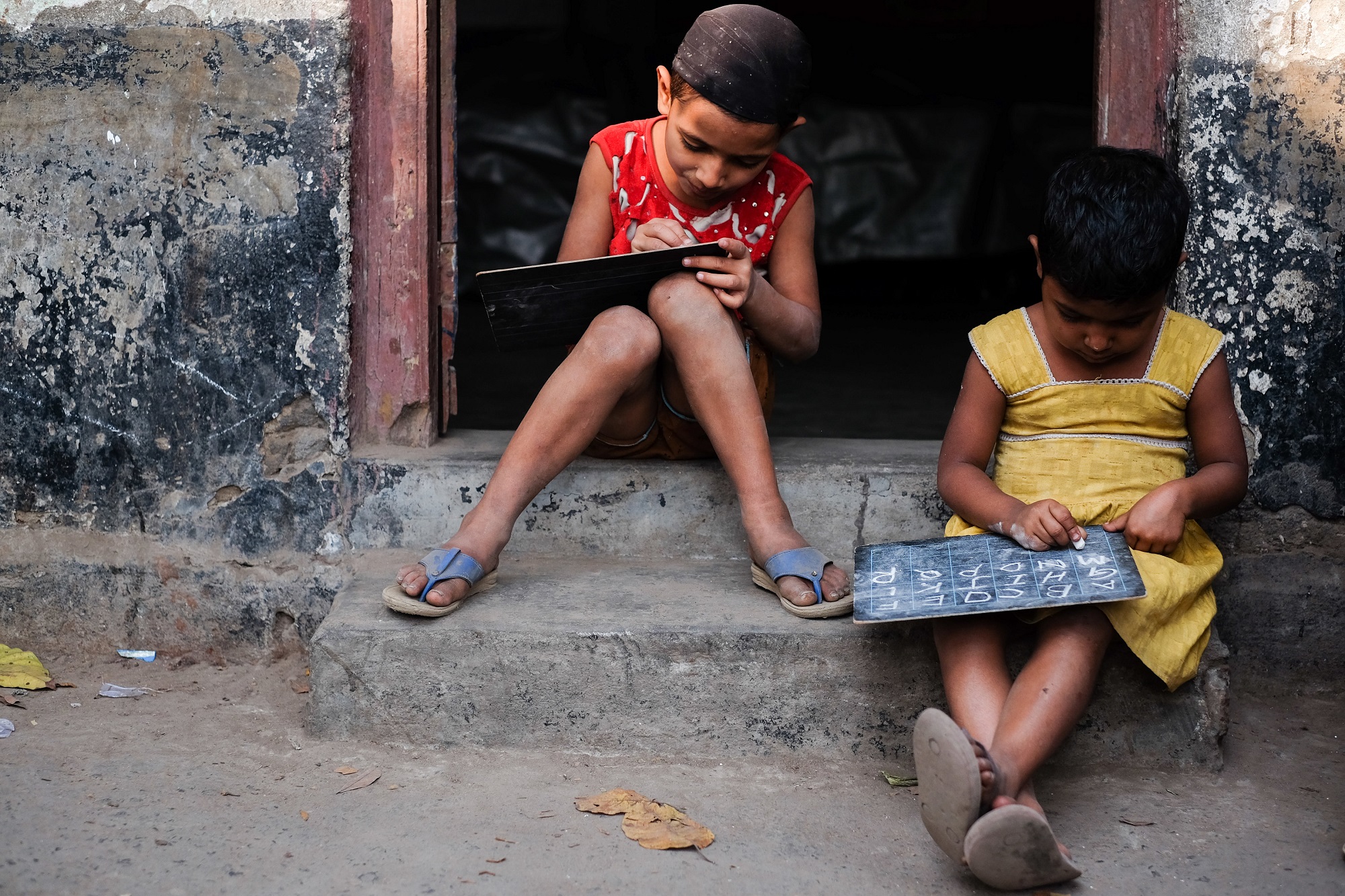 Each of the 100 adult women served by this project supports an average of three other people, so at least 300 people will benefit indirectly. Additionally, the expectation is that this project will create a positive ripple effect throughout the entire red light community. HFC programs are known to most everyone in the neighborhood – thousands of people. These residents see the children going into the Resource Centers every day. They buy snacks from the food cart operated by women trained at the Centers. Community liaisons canvass the area looking for women and children in need and inviting them to come for services. Through this ripple effect, at least 700 people will be indirectly impacted.
Each of the 100 adult women served by this project supports an average of three other people, so at least 300 people will benefit indirectly. Additionally, the expectation is that this project will create a positive ripple effect throughout the entire red light community. HFC programs are known to most everyone in the neighborhood – thousands of people. These residents see the children going into the Resource Centers every day. They buy snacks from the food cart operated by women trained at the Centers. Community liaisons canvass the area looking for women and children in need and inviting them to come for services. Through this ripple effect, at least 700 people will be indirectly impacted.
 HFC is committed to responding to the expressed needs of the women they serve. They conduct regular listening sessions and adapt their strategies accordingly. For example, they had not originally planned to offer a jewelry training program in the red light area. Instead, they offered a catering class, which successfully met the needs of some of the women and was particularly attractive to women ages 30 and older. But some of the younger women asked for a training program that called for more creative self-expression. They had heard of the success of HFC’s jewelry programs elsewhere, and were interested partially because of their artistic talent, and partially due to the appeal of being trained in a profession traditionally done only by men. HFC is also committed to providing opportunities for career advancement and promoting from within, so many of the women who are now program managers and trainers started as program participants. Their trajectory gives new participants a clear view to their own potential for growth and advancement.
HFC is committed to responding to the expressed needs of the women they serve. They conduct regular listening sessions and adapt their strategies accordingly. For example, they had not originally planned to offer a jewelry training program in the red light area. Instead, they offered a catering class, which successfully met the needs of some of the women and was particularly attractive to women ages 30 and older. But some of the younger women asked for a training program that called for more creative self-expression. They had heard of the success of HFC’s jewelry programs elsewhere, and were interested partially because of their artistic talent, and partially due to the appeal of being trained in a profession traditionally done only by men. HFC is also committed to providing opportunities for career advancement and promoting from within, so many of the women who are now program managers and trainers started as program participants. Their trajectory gives new participants a clear view to their own potential for growth and advancement.
Direct Impact: 195, Indirect Impact: 1,000
UN Sustainable Development Goals
![]()
![]()
![]()
![]()
![]()
Questions for Discussion
- Why do you think these women and girls require a “full circle” approach?
- What do you think the effect will be on the men in these communities?
- What do you think the impact will be from opening safe spaces to all women and children?
How the Grant Will be Used
DFW’s grant of $49,200 will be used for a portion of the following:
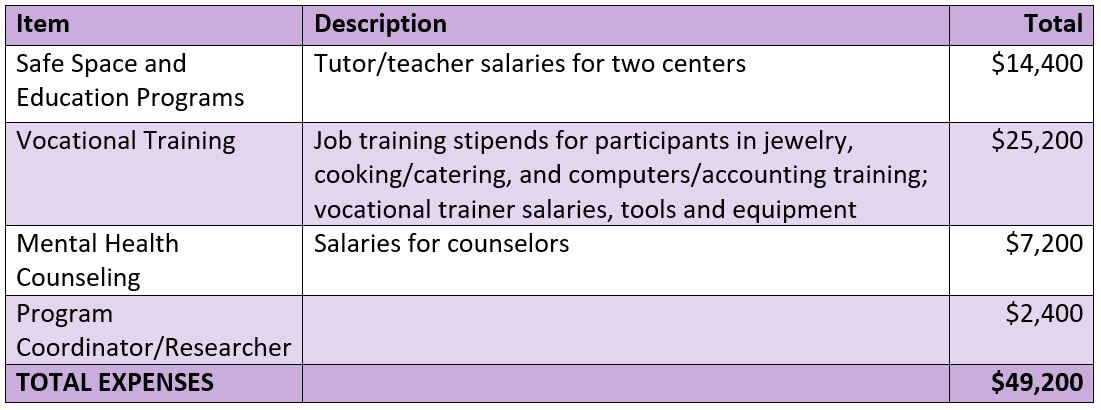
Why We Love This Project/Organization
We love this project’s focus on marginalized women who have experienced human trafficking and gender-based violence. This project seeks to help these women and their children to rewrite their scripts for better futures.
Evidence of Success
 HFC’s programs have proven incredibly successful: none of the women in their employment programs have been re-trafficked, 95 percent of the girls in the education and shelter programs have remained free and safe from exploitation, and 75 percent of the children in the education programs pass the rigorous “Iron Gate” exams and receive a high school diploma. HFC is currently in the process of implementing a data collection and analysis system to better report on these and other specific outcomes. HFC is seeking a secure centralized system to better capture and analyze outcomes. To date, HFC’s successful programs include Red Light Resource Centers (2017 – present), India Jewelry Employment Centers (2010 – present), Shelter-Based Employment Programs in sewing and block-printing, India/Nepal Education Programs (2008 – present) with many former street kids and rescued survivors now in college, Mumbai Shelter and Employment Programs (2010 – present), and more.
HFC’s programs have proven incredibly successful: none of the women in their employment programs have been re-trafficked, 95 percent of the girls in the education and shelter programs have remained free and safe from exploitation, and 75 percent of the children in the education programs pass the rigorous “Iron Gate” exams and receive a high school diploma. HFC is currently in the process of implementing a data collection and analysis system to better report on these and other specific outcomes. HFC is seeking a secure centralized system to better capture and analyze outcomes. To date, HFC’s successful programs include Red Light Resource Centers (2017 – present), India Jewelry Employment Centers (2010 – present), Shelter-Based Employment Programs in sewing and block-printing, India/Nepal Education Programs (2008 – present) with many former street kids and rescued survivors now in college, Mumbai Shelter and Employment Programs (2010 – present), and more.
Voices of the Girls
“Before I joined this program, I had no scope to express myself. Now I feel like I have my childhood back. I am a creative person and I love that Her Future gives me the choice to learn the skills that interest me.”
– Asha
“I don’t have a mother or father. I’m alone in the world. That’s why I wanted to join this family. Now I know I’ll never be alone. When I came to the (Jalpaiguri) shelter, I realized that even though all the girls here have had bitter and horrid pasts, they manage to be happy. Her Future taught me that whatever situation you are in, you should be confident and fight back problems bravely.”
– Swapna
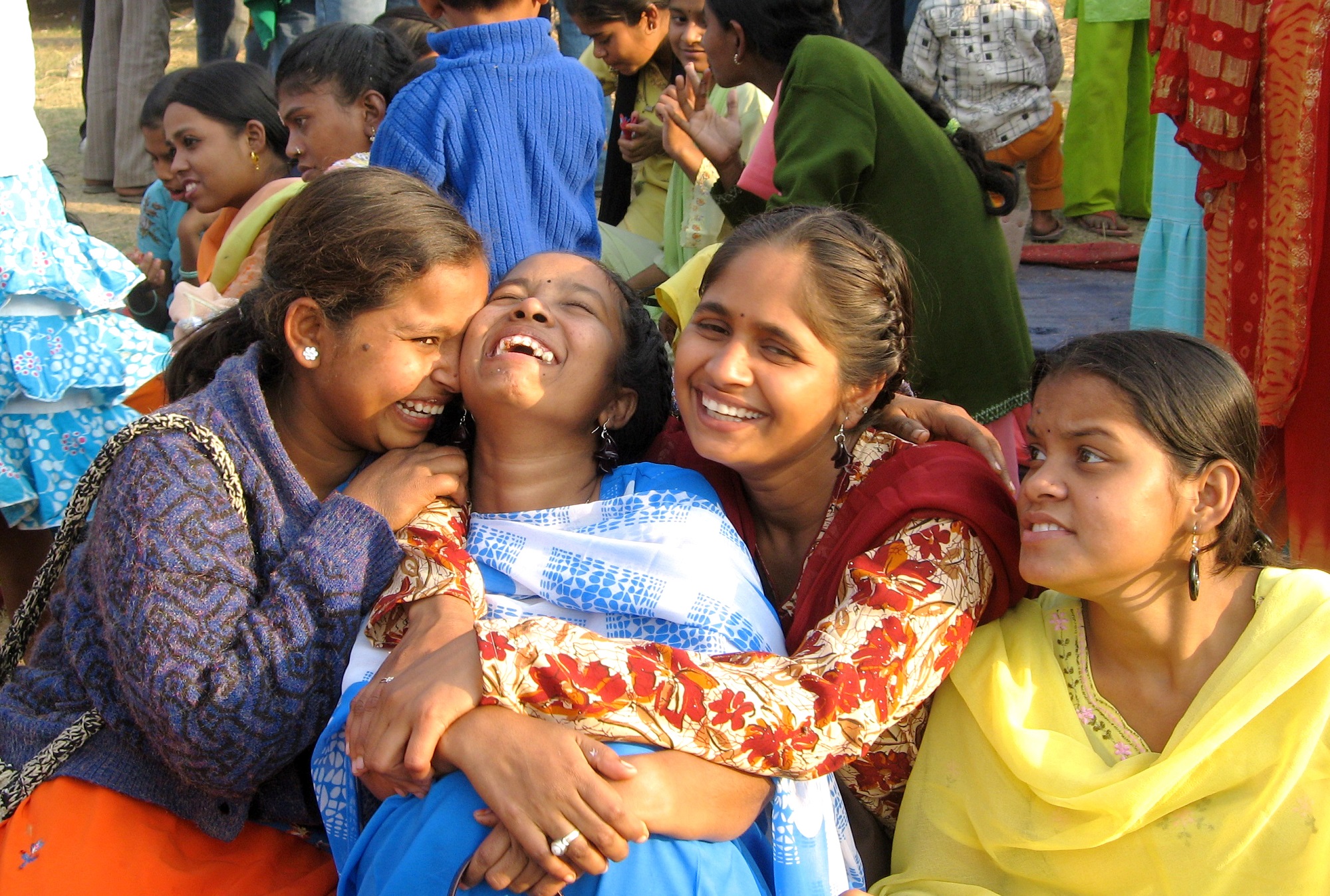
“Many days ago, I was very weak. But now I am strong. I used to be scared all the time – not knowing what I will do with my life. But because of Her Future, I have the freedom to choose and I was able to choose my job. I feel very blessed and want to help other people to become in charge of their own lives.”
– Mehrun
Sultana’s story:
Sultana was trafficked into the Sonagachi red light area when she was 15. She is now in her early 30s. After a bad crop year her father and stepmother sold her to traffickers. She was drugged and taken across the border from Bangladesh to India. When she awoke in a brothel in Kolkata, she was violently raped by two men for several days to break down her resistance and identity. Sultana became pregnant soon after she was trafficked. She now has four children ages 2 – 16. While she was no longer literally under lock and key, Sultana was forced to submit to increasingly violent sexual acts in order to survive and care for her children because she is no longer young with a high street value. Sultana’s teenage daughters, Ruhi and Rimi, ages 14 and 16, are the children of a pimp/trafficker. He has been grooming them to join their mother in sex work. Every year they perform, scantily clad, in a neighborhood dance competition. Their father and his friends throw coins while they perform.
Anisha’s story:
Anisha was raped by an uncle when she was a small child. Her parents saw her as broken and felt ashamed of her, so when she was 11, they sent her to work as a domestic servant. In that job, she was sexually assaulted by the father and brothers of the family. She ran away to a city in a neighboring state, and from there was soon trafficked into a brothel. When Anisha was finally rescued at age 18 and sent to live in HFC’s Jalpaiguri shelter, she trusted no one. Everyone in her life had betrayed or abused her. In the loving environment of the shelter, she has begun to recover. Now 20, she is learning to read and to be a tailor. Anisha loves participating in arts workshops and hopes for more opportunities to heal from her trauma and express her dreams.
About the Organization
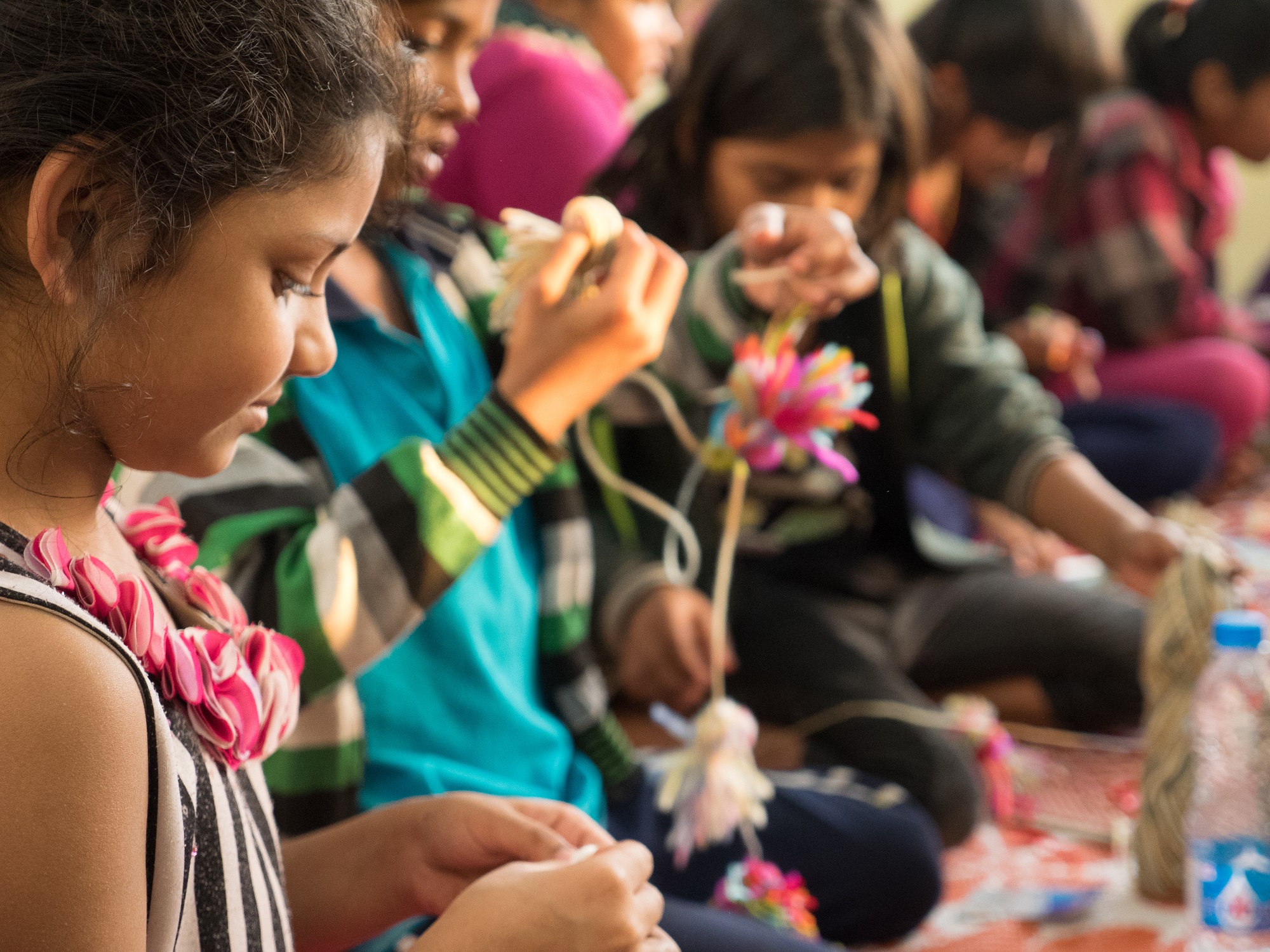 Her Future Coalition was founded by Sarah Symons and John Berger in 2005. Their primary mission has always been to assist survivors of human trafficking in becoming and remaining free. HFC’s model was created after asking leading women’s shelters in Asia, “What do you need most?” The answer always revolved around giving survivors safe, successful futures which would guard against re-victimization. HFC’s focus remains on education and employment as primary tools for women’s independence. HFC changed its name from Made By Survivors to Her Future Coalition in 2017. This was due to feedback from the women in the programs who wished not to publicly identify themselves as survivors. HFC has always been about the futures of the women and girls they serve, which is reflected in its new name.
Her Future Coalition was founded by Sarah Symons and John Berger in 2005. Their primary mission has always been to assist survivors of human trafficking in becoming and remaining free. HFC’s model was created after asking leading women’s shelters in Asia, “What do you need most?” The answer always revolved around giving survivors safe, successful futures which would guard against re-victimization. HFC’s focus remains on education and employment as primary tools for women’s independence. HFC changed its name from Made By Survivors to Her Future Coalition in 2017. This was due to feedback from the women in the programs who wished not to publicly identify themselves as survivors. HFC has always been about the futures of the women and girls they serve, which is reflected in its new name.
While HFC’s initial target beneficiaries were survivors of human trafficking, they quickly realized that in the same shelters as trafficking survivors were women and girls who had survived related atrocities and had the same needs as the trafficking survivors. These women and girls had endured rape, child marriage, and domestic violence. Realizing this, HFC broadened its mission and services to include other forms of gender violence. Today, HFC serves survivors of child sex trafficking, child marriage, rape, incest, and extreme family violence and torture. They also serve former child laborers, red light district inhabitants, and railway platform children.
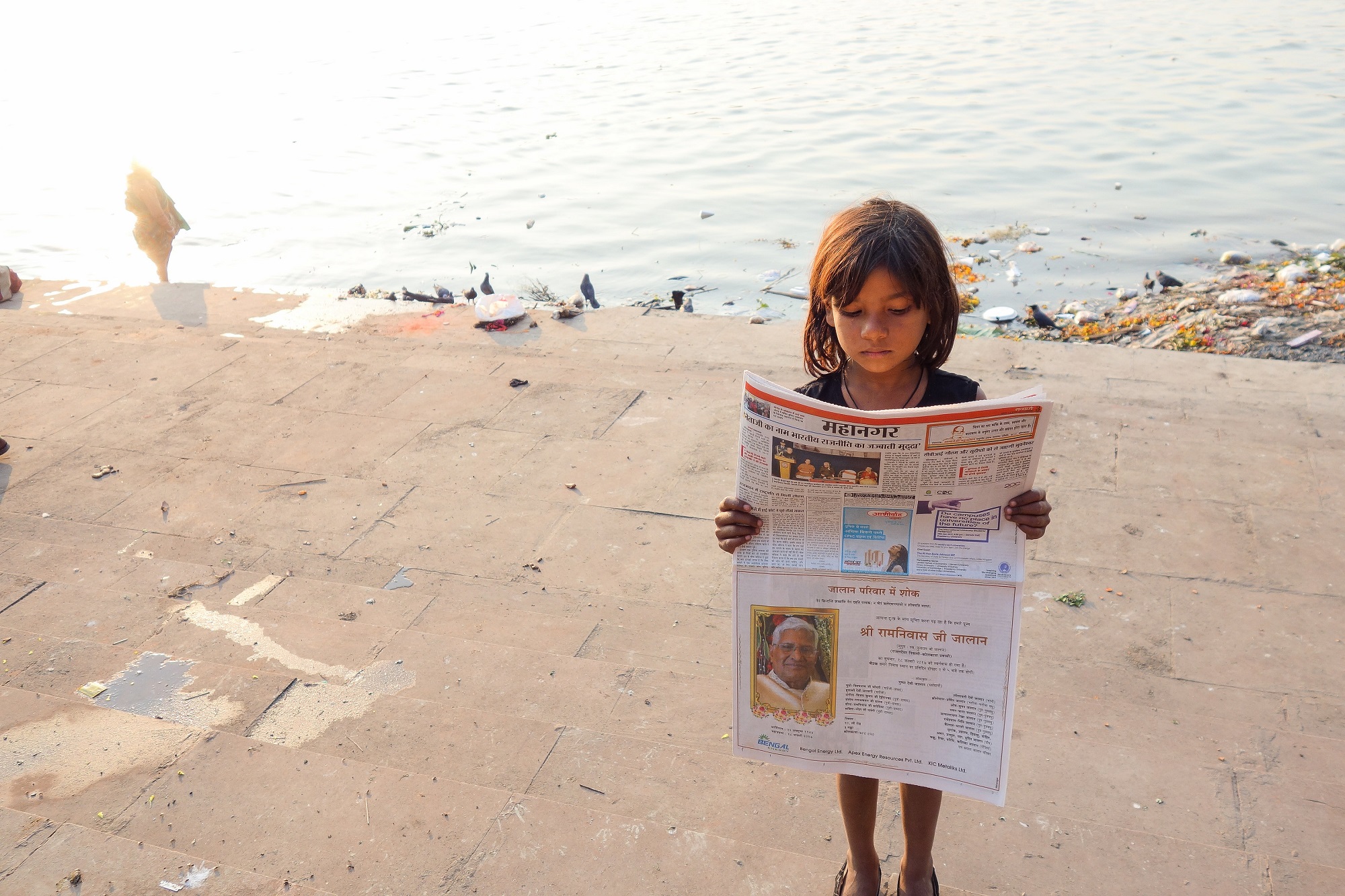 The majority of adult women in HFC’s programs are in their 20s. They have been rescued from – or are working their way out of – dangerous or abusive situations. More than 75 percent are illiterate, with limited or no formal education. Many have a high degree of trauma and health issues, including STDs, pelvic inflammatory disease, and respiratory issues such as TB. Many are mothers to children already in HFC’s programs. The children come from a variety of situations and range widely in terms of their physical and mental health, literacy, and trauma. All are economically disadvantaged, and most have experienced trauma and severe physical or sexual violence. Ninety percent of the children in HFC’s programs are girls. All are South or Southeast Asian and 60 percent are tribal or low-caste.
The majority of adult women in HFC’s programs are in their 20s. They have been rescued from – or are working their way out of – dangerous or abusive situations. More than 75 percent are illiterate, with limited or no formal education. Many have a high degree of trauma and health issues, including STDs, pelvic inflammatory disease, and respiratory issues such as TB. Many are mothers to children already in HFC’s programs. The children come from a variety of situations and range widely in terms of their physical and mental health, literacy, and trauma. All are economically disadvantaged, and most have experienced trauma and severe physical or sexual violence. Ninety percent of the children in HFC’s programs are girls. All are South or Southeast Asian and 60 percent are tribal or low-caste.
Today HFC offers, shelter, education, and employment training to these women and girls.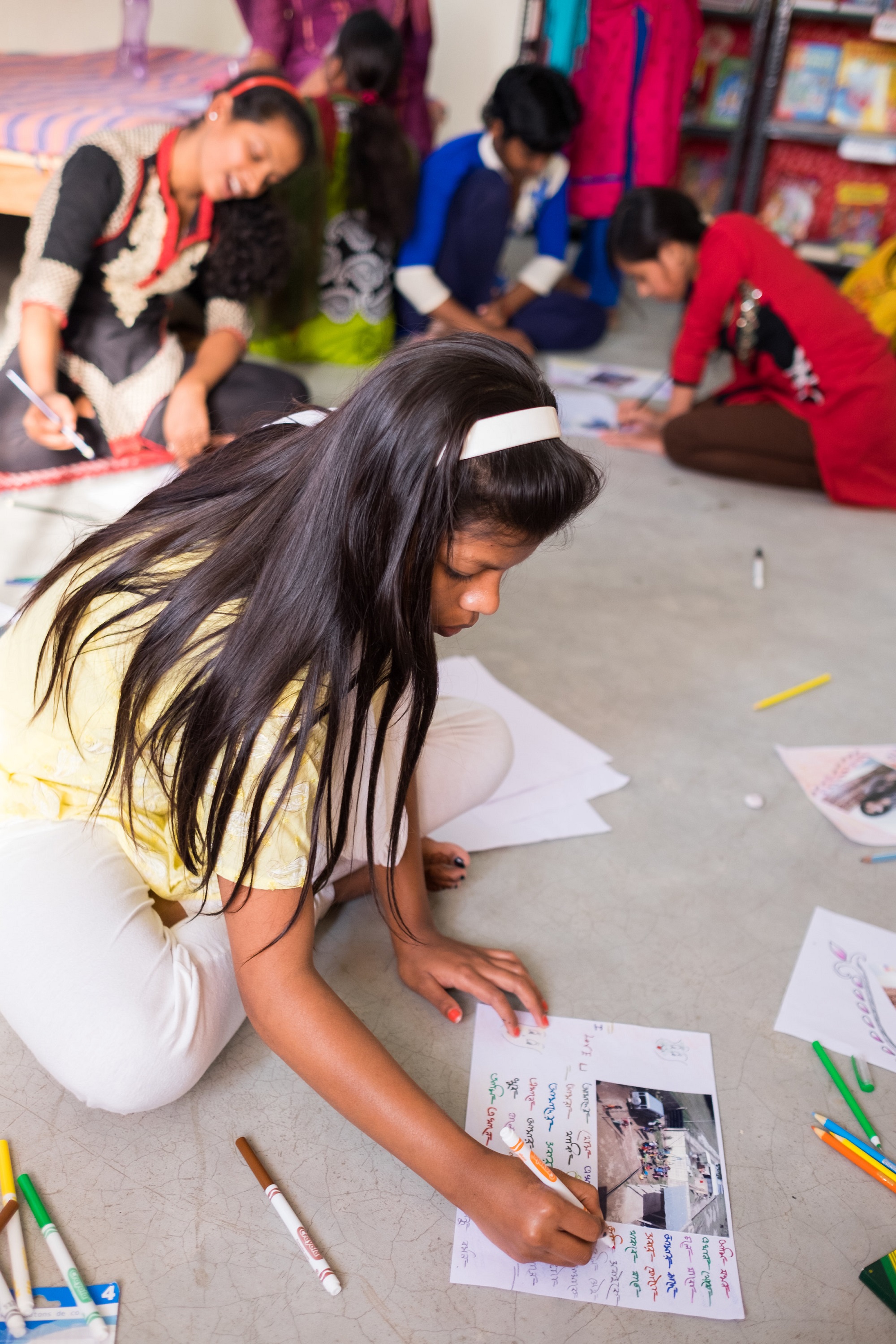
- Shelter: Her Future Coalition partners with local agencies to build, expand and maintain shelters for rescued girls. Many survivors are never able to return home, either because their families were involved in trafficking them, because their families refuse to accept them back, or because their families cannot be found. HFC launched its Shelter Programs in 2012, first by adding a floor to the Nijoloy shelter in Kolkata, and then, in 2015, by building an entire shelter for 150 survivors in Jalpaiguri, West Bengal. In 2017, HFC launched the three Red Light Resource Centers which will be expanded through DFW’s grant.
- Education: HFC has supported the education of 1000+ survivors and high risk children. Sponsorships pay for school fees, books, uniforms, tutoring, enrichments such as dance and art, and in many cases, room and board (at shelters or residential schools) from kindergarten through college.
- Employment: HFC offers high quality employment and vocational training to survivors and high risk women, enabling them to get out of shelters, to live independently, to remain free and safe from exploitation, and to support their children. Employment programs focus on skills that are hard to learn and are thus more valuable and valued in their communities. These skills have generally also been reserved for men, so in addition to the direct benefits of employment, this role-reversal helps to bring social change.
Where They Work

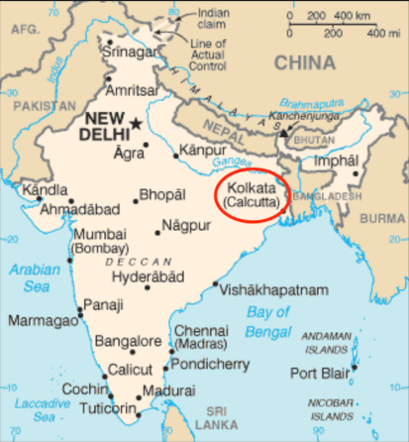
India is a country of extremes. With a population of 1.2 billion, it is the second most populated country on Earth, an emerging global power that comprises a third of Asia and 1/7 of humanity. It has been called the largest democracy in the world. English is the language of choice for political and commercial endeavors, while there are 22 other officially recognized languages, including Hindi, which is spoken by 44 percent of the population.
India’s population is young and savings and investment rates are healthy. Yet despite experiencing a recent economic surge, 360 million Indians – more than every U.S. man, woman, and child – live in squalid conditions and are among the most impoverished in the world. India’s slums are home to millions, yet a third are not even recognized by the government. Families crowd together in makeshift structures, drink scant and contaminated water, scrounge through waste dumps, and typically share unhygienic communal 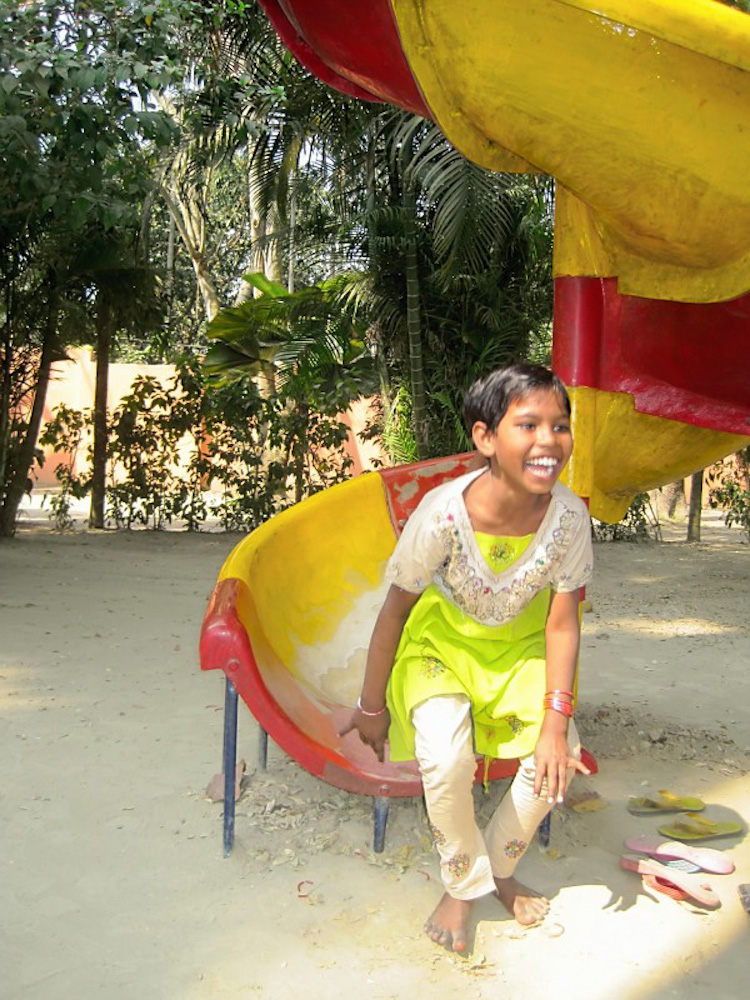 bathrooms that lack sewage systems. Discrimination against women and girls is rampant, corruption is entrenched, and there is an unequal distribution of quality basic and higher education that results in a 71 percent literacy rate (81 percent for males, 60 percent for females). One in five residents live below the poverty line.
bathrooms that lack sewage systems. Discrimination against women and girls is rampant, corruption is entrenched, and there is an unequal distribution of quality basic and higher education that results in a 71 percent literacy rate (81 percent for males, 60 percent for females). One in five residents live below the poverty line.
HFC serves women in South and Southeast Asia, India, Nepal, and Thailand. The DFW-supported project in Kolkata and Jalpaiguri are in West Bengal, India. West Bengal is in eastern India, where it borders Bangladesh, Bhutan, and Nepal. It is the largest producer of rice in India and a major producer of fish. It is also the second largest tea-producing state in India, home to the well-loved Darjeeling variety. Operating a business is less expensive in Kolkata than in other major Indian cities. This region has many natural resources and offers good connectivity to other areas by way of railway, roadway, ports, and airports. Kolkata is the second largest city in India after New Delhi, with a population of 4.5 million. Like a microcosm of the entire country, it, too, is an area of extremes. Although it is home to historic architecture and famed art galleries, it is also the seat of pronounced poverty and thousands of sex workers trapped in a life of abuse and slavery.
A closer look at human trafficking
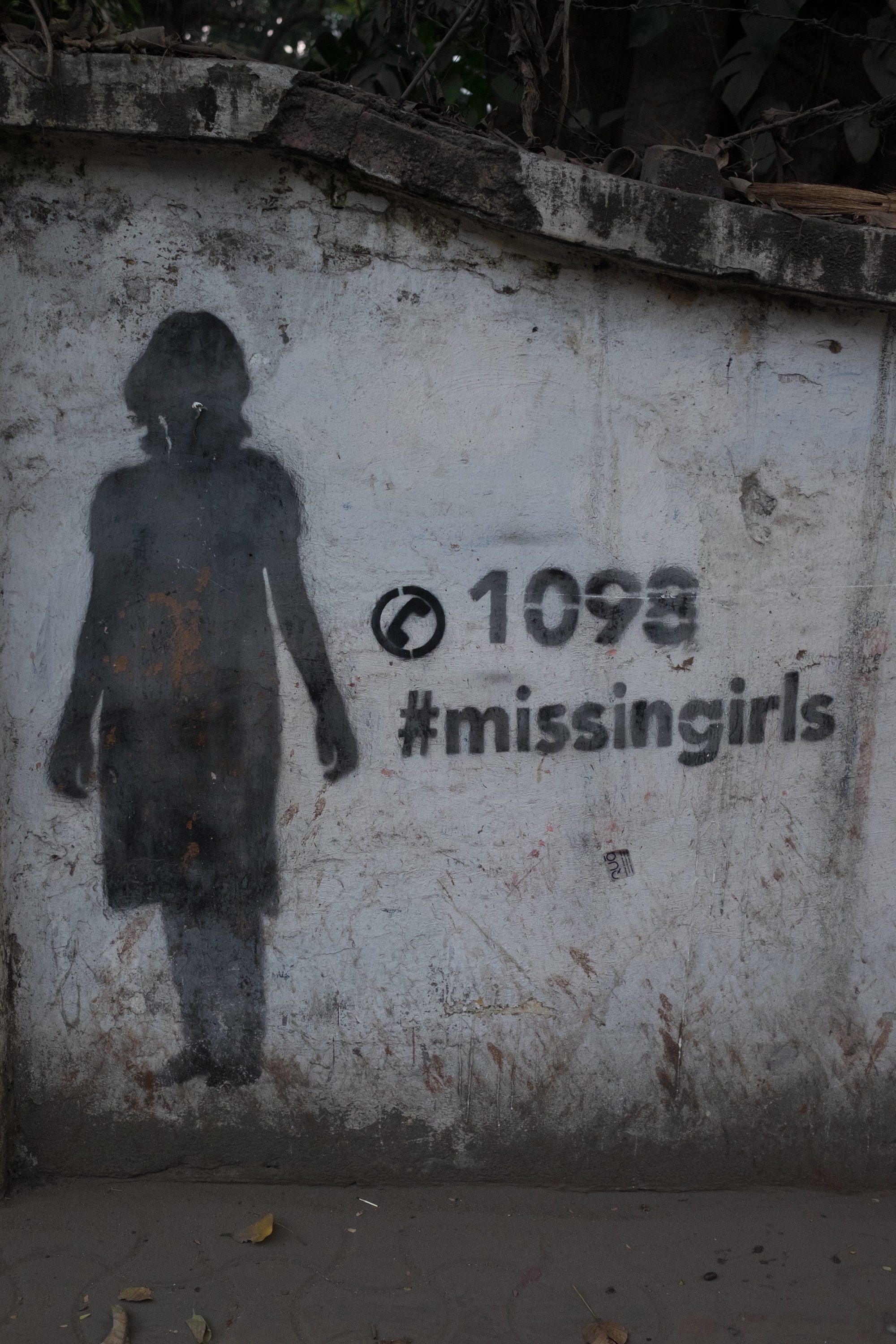 In India, a child goes missing every eight minutes – and it is estimated that less than a third of the total cases are actually reported. According to the United Nations, “trafficking is any activity leading to recruitment, transportation, harboring or receipt of persons, by means of threat or use of force or a position of vulnerability.” Today, human trafficking is the third largest organized crime in the world after drugs and arms, with 80 percent of the victims forced into sexual exploitation and the rest into labor. Sex trafficking has occurred for years but selling children into forced labor is relatively new. This is due to a rising demand for maids in urban areas where incomes have risen – a glaring example of India’s immense inequality.
In India, a child goes missing every eight minutes – and it is estimated that less than a third of the total cases are actually reported. According to the United Nations, “trafficking is any activity leading to recruitment, transportation, harboring or receipt of persons, by means of threat or use of force or a position of vulnerability.” Today, human trafficking is the third largest organized crime in the world after drugs and arms, with 80 percent of the victims forced into sexual exploitation and the rest into labor. Sex trafficking has occurred for years but selling children into forced labor is relatively new. This is due to a rising demand for maids in urban areas where incomes have risen – a glaring example of India’s immense inequality.
There are numerous factors that lead to human trafficking and the vulnerabilities that allow it to occur. Poverty and economic injustice are at the top of the list. Children born into poor families are at higher risk, especially those of tribal areas and lower castes and those in the northeastern regions such as West Bengal where victims are moved between neighboring borders. Community “agents” convince desperately poor parents that, for a small stipend, their children will enjoy a better education and life elsewhere. Similarly, parents running out of cash may sell their kids as debt labor. These children end up sweating in brick kilns and working 18-hour days as domestic servants, with some girls forced to work in brothels or on the street. Many of these children do not realize they have been sold until it is too late for them to escape, their lives destroyed by the shackles of enslavement.
Social inequality, a lack of education and a horrific attitude toward women and girls are other factors that lead to human trafficking. In addition to being sold into prostitution, many girls are sold into marriage. This has become more pronounced in the recent past as the side effect of female infanticide rears its ugly head.
Bonded labor and human trafficking are illegal in India, yet the practice continues. The horrific gang rape that occurred in 2012 led to a resurgence of interest in sex crimes and trafficking laws. Under the Immoral Trafficking Prevention Act, trafficking for commercial sexual exploitation is penalized, although prostitution is legal. The penalty for this crime is seven years to life in prison. Further, there are many laws banning child labor. 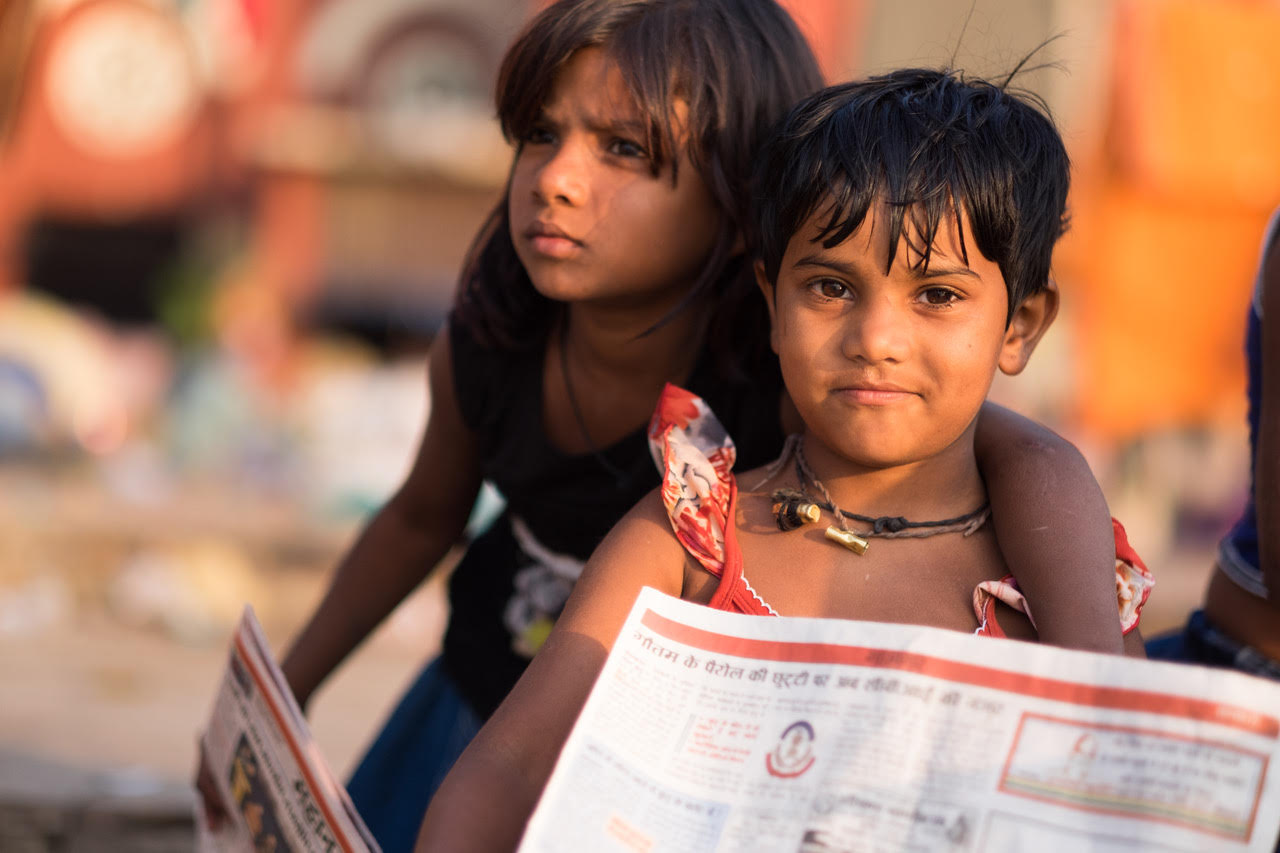 But the sad truth is that there is a massive chasm between making the laws and enforcing them. Bribes and corruption are widespread, making it easy for nefarious individuals to profit – handsomely – from selling humans. In addition, trafficking is often considered a low priority for police, who do not acknowledge it as a crime and who point to a lack of resources. Unfortunately, this laissez faire attitude has increased the power wielded by the traffickers. Because they are wealthy, they are able to pay off authorities and coerce vulnerable families to change their statements that would otherwise indict them.
But the sad truth is that there is a massive chasm between making the laws and enforcing them. Bribes and corruption are widespread, making it easy for nefarious individuals to profit – handsomely – from selling humans. In addition, trafficking is often considered a low priority for police, who do not acknowledge it as a crime and who point to a lack of resources. Unfortunately, this laissez faire attitude has increased the power wielded by the traffickers. Because they are wealthy, they are able to pay off authorities and coerce vulnerable families to change their statements that would otherwise indict them.
The rare girl who is rescued faces a multi-year uphill road to psychological and physical health. Shelters must be gated and protected by armed guards to keep traffickers from snatching them back. Some of the girls even attempt an escape back to a brothel because it is all they have known. Most cannot make rational decisions and are unable to return home because they do not remember where home is. The 135,000 children who are trafficked in India every year are deeply traumatized by the experience. As such, it is not unusual for a survivor to forget the name of her village or even her birth name.
Source Materials
https://www.theguardian.com/global-development/2015/apr/28/child-trafficking-india-domestic-labour-chhattisgarh
Human Trafficking in India: Abuse from the Rural Elite and the Wider Implications
https://www.cia.gov/library/publications/the-world-factbook/geos/in.html
http://www.mapsofindia.com/india/
https://www.ibef.org/states/west-bengal.aspx
https://www.dailymail.co.uk/news/article-3097192/The-filthy-dangerous-life-India-s-poorest-slum-children-play-train-tracks-parents-cook-bamboo-shelters-just-feet-away-onrushing-carriages.html
